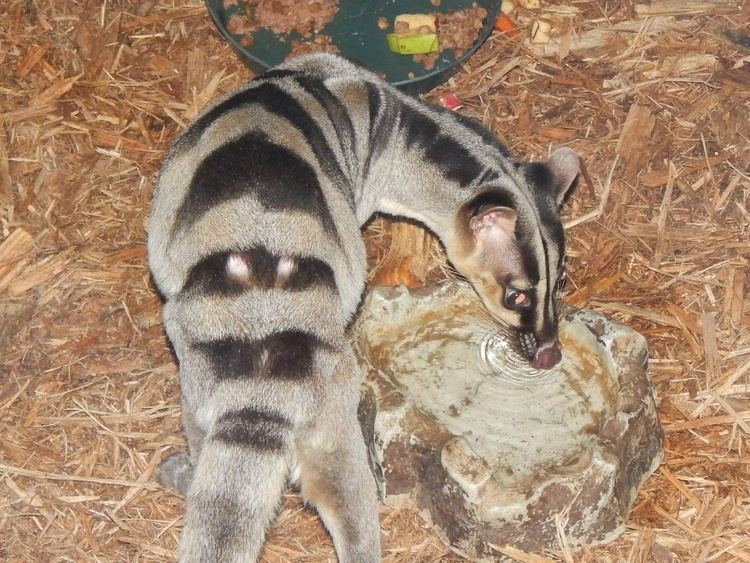Banded palm civet (Hemigalus derbyanus) is a small mammal species that is native to Southeast Asia. Despite their small size, they play a significant role in the ecosystem by aiding in seed dispersal, controlling insect populations, and serving as prey for larger predators. In this article, we will discuss the physical characteristics, habitat, behavior, and conservation status of banded palm civets.
Physical Characteristics:
Banded palm civets are small carnivores with a unique coloration pattern that distinguishes them from other civet species. They have a long, slender body covered in dark brown fur with distinctive white bands around their neck and body. Their head is elongated with small, rounded ears and a pointed snout. They have sharp teeth and retractable claws that are adapted for climbing trees and hunting prey. Banded palm civets have a body length of around 40-55 cm and weigh between 1.5-2.5 kg.
Habitat:
Banded palm civets are arboreal and can be found in a variety of habitats, including primary and secondary forests, plantations, and suburban areas. They are distributed throughout Southeast Asia, including Malaysia, Indonesia, Thailand, and the Philippines. Banded palm civets prefer areas with dense vegetation, especially those with fruiting trees, which are a primary food source.
Behavior:
Banded palm civets are primarily nocturnal and are active at night when they hunt for insects, small mammals, and fruit. They are solitary animals and only come together for mating purposes. Banded palm civets use scent marking to communicate with other members of their species and to establish territory boundaries. They are agile climbers and are often found in trees, where they build nests out of leaves and twigs.
Conservation Status:
Banded palm civets are currently listed as Near Threatened on the IUCN Red List due to habitat loss and hunting for their meat and fur. They are also frequently caught and sold in the pet trade. The loss of forest cover and the conversion of natural habitats into plantations and urban areas have had a significant impact on their populations. The banded palm civet is protected under various wildlife protection laws, but more efforts are needed to conserve this species, including habitat restoration and stricter enforcement of hunting laws.
In conclusion, banded palm civets are fascinating small mammals with unique physical characteristics and behavior. They play an essential role in the ecosystem and are a crucial component of Southeast Asian forests. With conservation efforts, we can ensure that these beautiful creatures continue to thrive in their natural habitats for future generations to enjoy.


Comments
Post a Comment